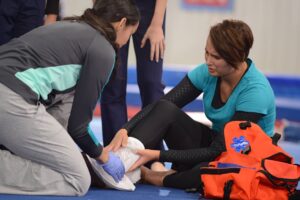The modern world with all the advances to bring us closer to our potential also brought with it a lot of stress. And as adults, adapting with the changes have become ingrained in our system thus allowing us to function well with society. The children however, are vulnerable to the pace at which they have to cope with the prevalent emotional realities. And as the keepers of the next generation’s future, it falls on us to ensure that they will not be ignored. This is the reason why schools are starting to adapt a social emotional learning curriculum. Using this standard, teachers will work to help students learn to alleviate and manage stress. Research indicated that this allows students to learn even the most complex topics more deeply. They enjoy the learning experience which is why they avoid to show negative behaviors. And, most importantly, the effect goes beyond the classroom and they bring the same positivity in their daily lives. This is the focus of social emotional learning and it could not have come at a better time.
What is Social Emotional Learning
Collaborative for Academic, Social, and Emotional Learning or CASEL is the main organization pushing for the integration of social emotional learning from preschool up to highschool. They define Social Emotional Learning as a process by which young and older individuals acquire the needed knowledge and attitude, and its application to enhance the following to skills:
- Understand and manage emotions – While empathy may seem like a basic human trait that everyone ought to learn as they grow up, the era of instant gratification made it more difficult for people to understand each other. Digital means of communication does less to convey emotions than what we have been used to. Emoticons are no substitutes to facial tics that have to be learned.
- Set and achieve positive goals – In this instance, a positive goal means an objective that benefits all parties involved. This means that learning has to be driven in such a way that the student have to realize something that will benefit not only him/her but his/her peers and even the teachers.
- Establish and maintain positive relationships – Building relationships is the hallmark of societal interactions. Students that lack the skills to build meaningful connections with people that they meet in work or any endeavor, will be unable to effectively communicate their thoughts to actively make a positive impact. This skill is obviously also important in other facets of life such as in contributing to the community they will belong to in the future, maintaining friendships, courtship, and raising kids once he has a family of his/her own.
- Make responsible decisions – Responsibility cannot be learned simply by enumerating them to a child. They have to understand the reasoning behind making them own up to their actions. Empathy can be trained further so they can understand the consequences of their actions.
As opposed to what may seem to be implied in social emotional learning curriculums, the practice can mostly be integrated within the system. Even fully functioning curriculums can be ingrained with philosophies from social emotional learning.
Categories of Social Emotional Learning
Self Awareness
The age old question of how one knows himself/herlife is something that everyone gets asked with at least once in his/her life. But the real question here is how detached one’s emotion is to his/her mental self. While it is never easy to effectively answer this question especially for younger students that have yet to explore their innermost thoughts and feelings, the key is to prepare them for whatever it may be. They will be taught how to understand their own feelings and be know how to deal with them in a healthy and positive way.
Self Management
Independence have to be one of the cornerstones of social emotional learning. Students are taught to think for themselves and devise their own ways and strategies to accomplish tasks they encounter in their daily lives. Be these tasks be academic like completing homework and studying for tests or social tasks like making new friends or leading a group. It is important that students learn for themselves so they can better understand their own feelings once they start to think independently.
Social Awareness
Social emotional learning celebrates empathy every single person they meet. This means that they will be taught about the issues that hound the current state of society. And they will try to understand how to relate the lessons in class to real life scenarios. For instance, a class in history can be a perfect point to let people learn about the consequences of war that are currently going on. To learn values that will help society means knowing how they can make the world a better place one day.
Relationship Skills
Beyond just making friends and being good kids to their parents, social emotional learning teaches children how they can manage relationships beyond to what they will expect as they grow. They have to understand the differences of people and know that not everyone will respond the same to how they are treated. They will learn to understand the thoughts and emotions that people are trying to convey through actions. Learning how to deal will falling out, and being an outcast are also some of the things that can be taught to them.
Why we need Social Emotional Learning
Students will spend more time in school than they would with their parents and their siblings. This has become the norm since the establishment of formal education and will be the same going forward. This amount of time is valuable especially for minds that are still forming. As students grow up, they are going to encounter many interactions that may seem alien to them at first. If properly implemented a Social emotional learning curriculum will allow them to be exposed safely to a bulk of interactions that may be dangerous for them in a different environment.












